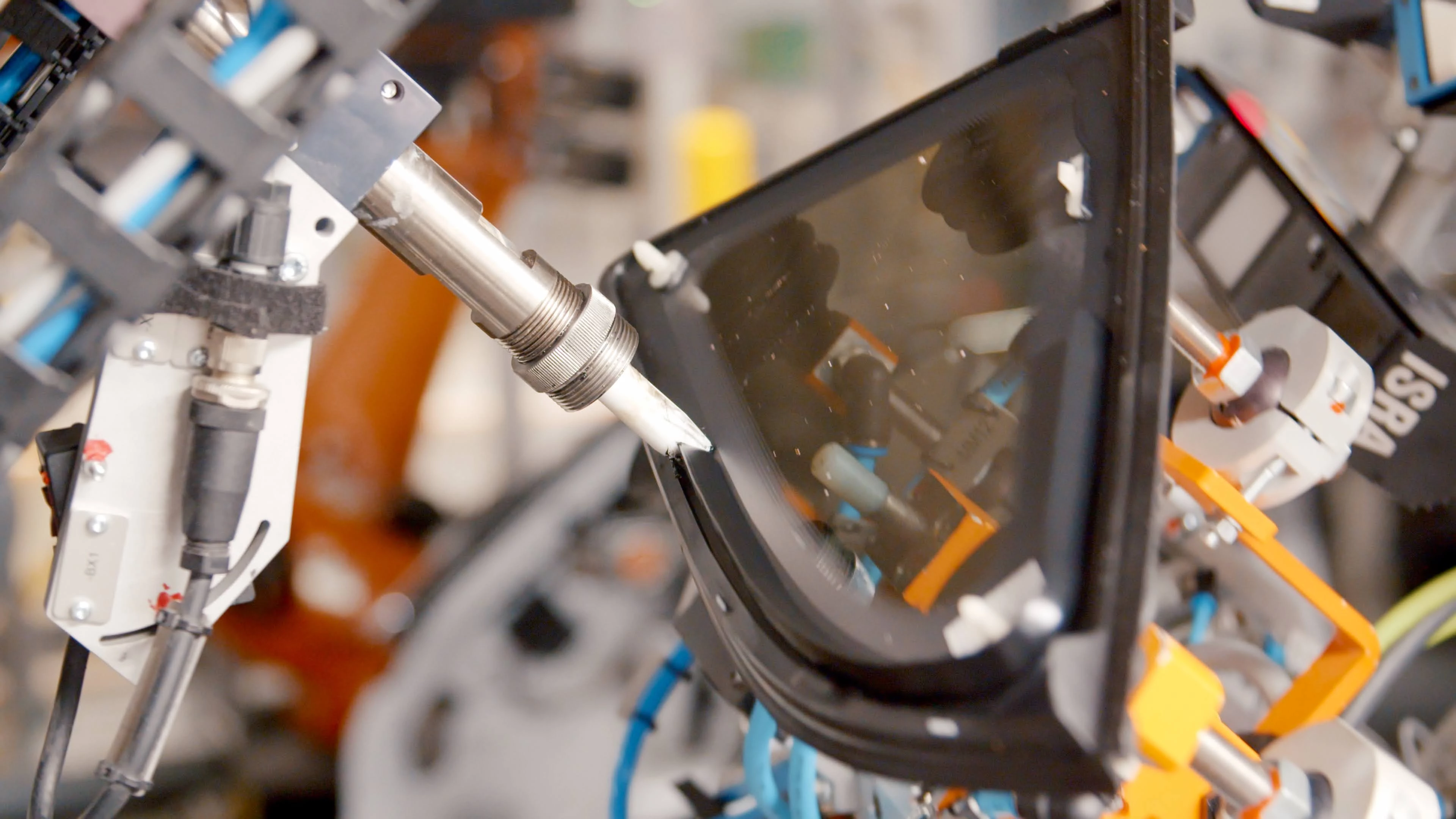For final assembly, the systemic shift towards electric mobility means enormous structural changes. Just how far-reaching they are is demonstrated by the rebuild of Volkswagen’s shop floor in Zwickau. Since June 2020, only electric cars have rolled off the line here, and this figure is set to increase to up to 330,000 units per year in the future. Dürr responded to the new challenges in final assembly with the NEXT.assembly strategy for the final assembly business. It brings together expertise in all areas from planning and consulting to conveyor, gluing, assembly, and filling technology to the end-of-line test stands and the appropriate digital solutions for final assembly. This enables manufacturers to select either individual components from a modular system or an optimized overall solution for their electric offensives. Precisely how this portfolio from Dürr adapts to customers’ needs can be illustrated using the example of Volkswagen’s site in Zwickau.
Window insertion: highly automated and flexible
The glazing center for the Modular Electrification Toolkit (MEB) underwent significant automation during the factory modernization. In the future, everything will take place fully automatically: the feeding of the large windows from sequenced transport containers and the side windows from type-specific transport containers by the logistics module, the glue application and insertion of the large windows in cycle operation and the side windows in flow operation. Previously, the automated insertion of side windows was only possible in stop-and-go mode. The line tracking process developed in close cooperation with Volkswagen changes this, by keeping the bodies moving on skillet platforms while robots glue in the side windows. One benefit is significant cost reductions since the conveyor technology no longer needs to be adapted to the cycle operation. Moreover the location can be flexibly selected since the side window gluing system can be integrated anywhere in the assembly line.
Marriage: greater speed, lower costs
The Zwickau factory is also ideally equipped for the modified marriage process for electric vehicles with eight x-gun multi direct screwing systems. Dürr developed this system especially for bringing together the body and battery, and with it achieved an unprecedented level of automation. This patented screwing device holds up to four screws in a magazine and fastens them one after the other with just one screwdriver. With eight x-gun systems, this is equivalent to 26 screws every minute. Since intermediate spindles on pallets are no longer needed, these costs no longer apply.
Filling technology: big on variants, small on space
Different refrigerants are used for climate control in the interior of the ID.3 manufactured in Zwickau. One option sees Volkswagen using the refrigerant R744 for the first time, since its thermodynamic properties mean it can be used for cooling and heating. The energy saved in this way increases the electric cars’ range. The manufacturing changeover requires a new technological approach for the filling technology too. The aim for the conversion was to fill the vehicles with R744 in the same cycle time as for the previously used coolants. This necessitated modernizing the filling technology from the base unit to the adapters for the new adapter generation G4 Blue. By modifying the travel consoles, it was possible to integrate the new components for R744.
Conveyor technology: compatible and functional
The pilot hall of the Zwickau factory has a 256 meter long section for overhead conveyors. In the past, 22 C-hangers with scissor lifts were used to transport the bodies. These are not compatible with the undercarriage geometry of the MEB platform, especially due to the high-voltage battery. Dürr therefore replaced the 22 pairs of C-hanger arms with 4-arm hangers on the subframe of the body carrier scissors lift. Since this meant it was no longer possible to convey bodies with wheels in the hanger, the scope of supply included an appropriate lifting platform for wheel assembly and the transfer operation.
In Zwickau, the individual components from the NEXT.assembly modular system come together in a final assembly system where all processes and technologies are optimally positioned for the age of electromobility.
Video
Dürr shows the fully automated side window assembly process using line tracking here in the video.




